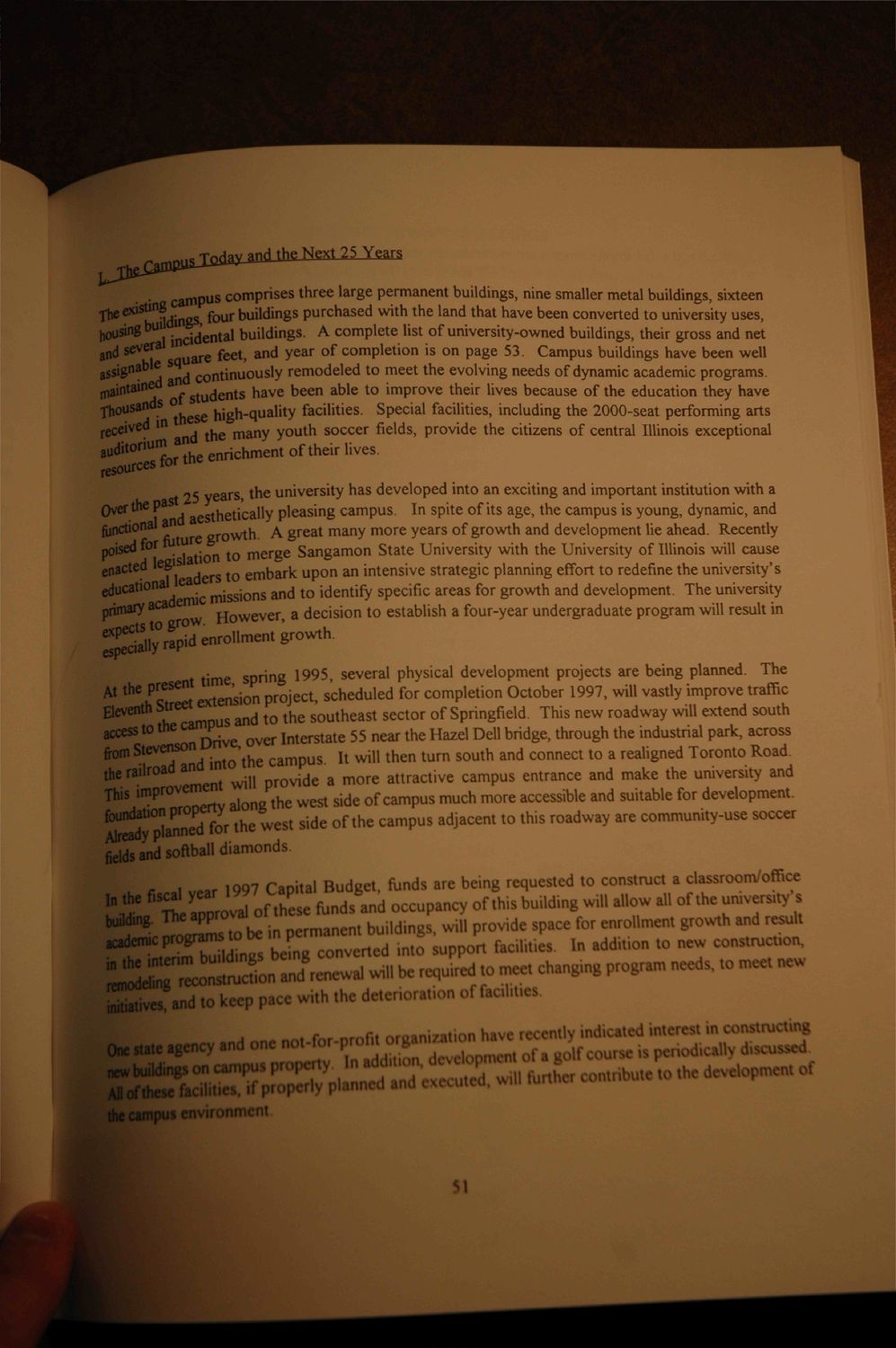| |
| |
Caption: UIS History 1969-1995 (Sangamon State Univ)
This is a reduced-resolution page image for fast online browsing.

EXTRACTED TEXT FROM PAGE:
B P f f l ^ ^ B the Next 25 Years campus comprises three large permanent buildings, nine smaller metal buildings, sixteen M ^ ^ d i n g s ,fourbuildings purchased with the land that have been converted to university uses, fusing bu - ncident al buildings. A complete list of university-owned buildings, their gross and net and several ^ ^ ^ ^ year of completion is on page 53. Campus buildings have been well nab assig |^ gjy QQiitinuously remodeled to meet the evolving needs of dynamic academic programs. ^ntained stu(jents have been able to improve their lives because of the education they have g|p • high-quality facilities. Special facilities, including the 2000-seat performing arts received jfi M n i a n y youth soccer fields, provide the citizens of central Illinois exceptional audit ^nft e resources torhme enrichment of their lives, 9S vears the university has developed into an exciting and important institution with a Over the pa stnetically pleasing campus. In spite of its age, the campus is young, dynamic, and functional a -." r o w t n A great many more years of growth and development lie ahead. Recently poised fori t - o n to merge Sangamon State University with the University of Illinois will cause enacted leg' ^ embark upon an intensive strategic planning effort to redefine the university's educational missions and to identify specific areas for growth and development. The university primary aca e j j o w e v e r a decision to establish a four-year undergraduate program will result in e e ^ S l y S enrollment growth. time spring 1995, several physical development projects are being planned. The | | 3 B | exter 4ion project, scheduled for completion October 1997, will vastly improve traffic Eleventh Mr<* ^ tQ t h e s o u t h e a s t sector of Springfield. This new roadway will extend south access to the camp ^ y - k g - ^ ^ 5 5 tmK t h e H a z e l D e U bridge, through the industrial park, across from Stevenso ^ campus. It will then turn south and connect to a realigned Toronto Road. ^ railroad an o v i d e a m o r e attractive campus entrance and make the university and This improveme * w e s t s i d e o f c a m p u s m u c n more accessible and suitable for development. foundation||||| | | | | ^ o f t h e c a m p u s adjacent to this roadway are community-use soccer field's and softball diamonds. In I . I f , QQ7 CaDital Budget, funds are being requested to construct a classroom/office M e E ^ b v l of t £ funds^d occupancy of this building will allow all ofthe unwers.ty s i f ™CJZStfbe in permanent buildings, will provide space for enrollment growth and result B i l g s b e L converted into support facilities. In addition to new construcuon, • I and to keep pace with the deterioration of fac.ht.es. a^enc^ the campus environment SI
| |